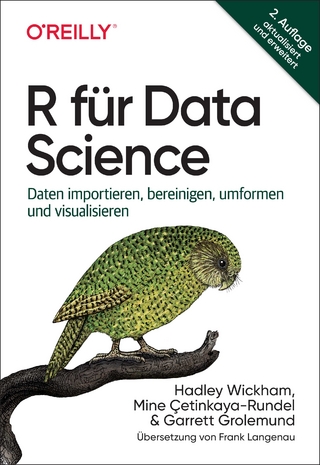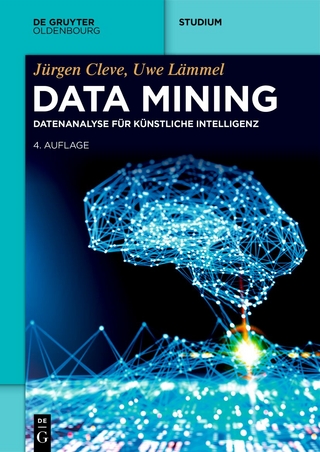
The 3-D Global Spatial Data Model
Crc Press Inc (Verlag)
978-1-4987-2216-2 (ISBN)
Traditional methods for handling spatial data are encumbered by the assumption of separate origins for horizontal and vertical measurements, but modern measurement systems operate in a 3-D spatial environment. The 3-D Global Spatial Data Model: Principles and Applications, Second Edition maintains a new model for handling digital spatial data, the global spatial data model or GSDM. The GSDM preserves the integrity of three-dimensional spatial data while also providing additional benefits such as simpler equations, worldwide standardization, and the ability to track spatial data accuracy with greater specificity and convenience. This second edition expands to new topics that satisfy a growing need in the GIS, professional surveyor, machine control, and Big Data communities while continuing to embrace the earth center fixed coordinate system as the fundamental point of origin of one, two, and three-dimensional data sets. Ideal for both beginner and advanced levels, this book also provides guidance and insight on how to link to the data collected and stored in legacy systems.
A native Virginian, Earl F. Burkholder grew up in Virginia’s Shenandoah Valley and graduated from Eastern Mennonite High School in 1964. He earned a BS in civil engineering from the University of Michigan, Ann Arbor, Michigan, in 1973 and an MS in civil engineering (Geodesy) in 1980. From 1980 to 1993, he taught upper division surveying classes at the Oregon Institute of Technology, Klamath Falls, Oregon. After five years of being self-employed, he taught in the Surveying Engineering program at New Mexico State University from 1998 to his retirement in 2010. His professional career began as a draftsman with Gould Engineering, Inc. of Flint, Michigan in 1968. Following graduating from University of Michigan, Ann Arbor, Michigan, he worked five years for Commonwealth Associates, Inc. of Jackson, Michigan, an international consulting firm for the utility industry. Assigned to the Transmission Line Engineering Division at Commonwealth, he was responsible for surveying related computations on projects in numerous states and was promoted to Survey Project Manager prior to leaving in 1978 to attend Purdue University. While teaching at Oregon Tech, he became editor of the ASCE Journal of Surveying Engineering and served two separate four-year terms; 1985–1989 and 1993–1998. He also became involved in ABET accreditation activities while at Oregon Tech and went on to serve on the Engineering Related Accreditation Commission (now known as the Applied Science Accreditation Commission) culminating as chair of the RAC in 2000/2001. While self-employed, he completed three major projects for the Southeastern Wisconsin Regional Planning Commission (SEWRPC), Waukesha, Wisconsin. The first project was to develop a reliable bidirectional algorithm for transforming data between the NAD 27 datum being used by SEWRPC and the new NAD 83 datum published by the National Geodetic Survey (NGS). Upon successful completion of the horizontal transformation project, the next project was a similar assignment for the bidirectional transformation of data between the NGVD 29 datum (again being used by SEWRPC) and the new NAVD 88 datum published by NGS. Prior to beginning the horizontal transformation project, he suggested to Dr. Bauer, SEWRPC Executive Director, that the datum horizontal and vertical transformation challenges would be an excellent opportunity to combine the two databases into a single 3-D database. After a rather short deliberation, Dr. Bauer indicated that the 3-D proposal was untested, too radical, and not proven practical. However, upon completion of the first two projects, Dr. Bauer commissioned the preparation of a report outlining and defining how such an integrated model could be implemented. That report became the basis for the first edition of The 3-D Global Spatial Data Model: Foundation of the Spatial Data Infrastructure published by CRC Press in 2008.
Foreword. Preface to the Second Edition. Preface to the First Edition. Acknowledgments. Author. List of Abbreviations. Chapter 1 The Global Spatial Data Model (GSDM) Defined. Chapter 2 Featuring the 3-D Global Spatial Data Model. Chapter 3 Spatial Data and the Science of Measurement. Chapter 4 Summary of Mathematical Concepts. Chapter 5 Geometrical Models for Spatial Data Computations. Chapter 6 Overview of Geodesy. Chapter 7 Geometrical Geodesy. Chapter 8 Geodetic Datums, Chapter 9 Physical Geodesy. Chapter 10 Satellite Geodesy and Global Navigation Satellite Systems. Chapter 11 Map Projections and State Plane Coordinates. Chapter 12 Spatial Data Accuracy. Chapter 13 Using the GSDM to Compute a Linear Least Squares GNSS Network. Chapter 14 Computing Network Accuracy and Local Accuracy Using the Global Spatial Data Model. Chapter 15 Using the GSDM—Projects and Applications. Appendix A: Rotation Matrix Derivation. Appendix B: 1983 State Plane Coordinate Zone Constants. Appendix C: 3-D Inverse with Statistics. Appendix D: Development of the Global Spatial Data Model (GSDM). Appendix E: Evolution of Meaning for Terms: Network Accuracy and Local Accuracy. Index.
| Erscheinungsdatum | 29.07.2017 |
|---|---|
| Zusatzinfo | 31 Tables, black and white; 4 Illustrations, color; 109 Illustrations, black and white |
| Verlagsort | Bosa Roca |
| Sprache | englisch |
| Maße | 156 x 234 mm |
| Gewicht | 876 g |
| Themenwelt | Informatik ► Datenbanken ► Data Warehouse / Data Mining |
| Naturwissenschaften ► Geowissenschaften ► Geografie / Kartografie | |
| Technik ► Bauwesen | |
| ISBN-10 | 1-4987-2216-4 / 1498722164 |
| ISBN-13 | 978-1-4987-2216-2 / 9781498722162 |
| Zustand | Neuware |
| Informationen gemäß Produktsicherheitsverordnung (GPSR) | |
| Haben Sie eine Frage zum Produkt? |
aus dem Bereich


